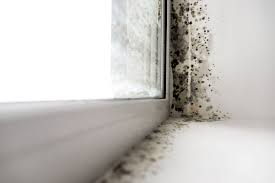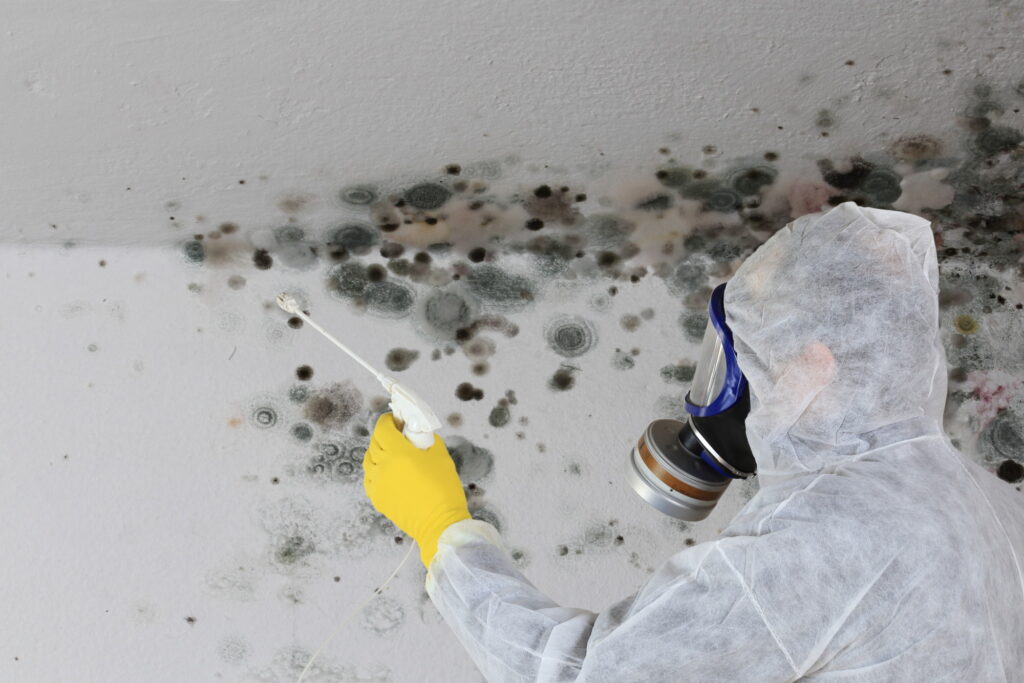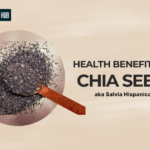Introduction
Black mold, also known as Stachybotrys chartarum, is a type of fungus that thrives in moist environments and can pose serious health risks when it infiltrates our homes or workplaces. This comprehensive article aims to shed light on the hidden dangers and risks associated with black mold. By exploring various aspects, we hope to enhance your understanding of its characteristics, health implications, spread, detection, prevention, and even its impact on real estate transactions and indoor air quality.
What is Black Mold?

Black mold, characterized by its dark greenish-black appearance, is a toxic fungus that releases spores into the air. It is commonly found in damp or water-damaged areas, such as basements, bathrooms, and areas with poor ventilation. Various types of black mold exist, including Stachybotrys atra, Stachybotrys chlorohalonata, and Stachybotrys chartarum. Differentiating between these types could help determine the severity of the infestation and the potential health risks associated with them.
Moisture-prone areas in our homes, such as leaky pipes, flooded basements, or areas affected by condensation, provide an ideal environment for black mold growth. Identifying these areas and taking necessary preventive measures is crucial in keeping our living spaces safe from the dangers of black mold.
Health Risks Associated with Black Mold Exposure

Recognizing the potential health hazards associated with black mold is essential for protecting ourselves and our loved ones. Inhalation of black mold spores can lead to respiratory problems such as coughing, wheezing, and shortness of breath. Additionally, some individuals may experience allergic reactions and skin irritations upon exposure to black mold.
Moreover, long-term exposure to black mold has been linked to chronic illnesses, including asthma, bronchitis, and even neurological issues. These serious health risks highlight the need for proactive measures to prevent and eliminate black mold from our living spaces.
How Does Black Mold Spread?
To effectively combat black mold, it is important to understand how it spreads. Black mold reproduces by releasing tiny spores into the air, which can easily disperse through ventilation systems or be carried by humans and pets. Factors such as high humidity levels, organic matter, and stagnant air contribute to the growth and propagation of black mold.
Black mold can enter our homes through various ways, including open windows, HVAC systems, and even on our clothing or footwear. Once inside, it can spread rapidly, especially in areas with moisture and poor ventilation. By identifying how black mold spreads, we can take preventive measures to limit its infestation and protect our living spaces.
Recognizing Signs of Black Mold Infestation
Detecting black mold early is crucial in reducing its potential risks. Visual indications of black mold include the presence of dark patches or discoloration on walls, ceilings, or other surfaces. Additionally, a musty odor is often an indicator of mold growth.
However, black mold can also hide in hard-to-reach areas, such as behind wallpaper, under carpets, or inside air vents. Regular inspections and thorough monitoring of our living spaces can help identify hidden signs of black mold and prevent further infestation.
Testing and Detecting Black Mold
While visual detection can provide initial evidence of black mold, further testing and inspection may be necessary to accurately assess its severity. DIY methods for detecting black mold include using mold testing kits available in the market, which typically involve collecting samples and sending them to a laboratory for analysis.
Alternatively, professional mold inspection services can provide a comprehensive evaluation of our living spaces, identifying not only the presence of black mold but also its extent and potential risks. Interpreting the mold testing results accurately can help us understand the severity of the infestation and guide us toward appropriate remediation actions.
Preventing Black Mold Growth
Prevention is key when it comes to black mold. Controlling moisture levels in our homes by promptly repairing leaks, improving airflow, and using dehumidifiers can inhibit mold development. Proper ventilation techniques, such as using exhaust fans in bathrooms and kitchen areas, can also help reduce the risk of mold growth.
Moreover, regular cleaning and maintenance practices should be followed to prevent mold infestation. Keeping our living spaces clean, controlling humidity, and promptly addressing water damage or leaks are essential in minimizing the potential risks of black mold.
Removing Black Mold Safely

If black mold is detected, it is crucial to remove it safely and effectively. DIY mold removal may be feasible for small areas of contamination. However, precautions such as wearing protective clothing, gloves, and masks should always be taken to minimize personal exposure.
In some cases, professional mold remediation services are necessary, especially for extensive infestations or if there are underlying structural damages. Professionals are equipped with the knowledge and experience to safely and thoroughly remove black mold, preventing further spread and potential health risks. It’s important to note that certain safety equipment, such as air purifiers or containment barriers, may be required during the mold removal process.
The Importance of Timely Black Mold Remediation
Ignoring black mold can have severe consequences, both for our health and the integrity of our properties. By taking timely action, we can limit the health risks associated with black mold exposure, ensuring the well-being of ourselves and our loved ones. Additionally, swift remediation can prevent long-term property damage, preserving the value and structural integrity of our homes.
In case black mold is discovered, it is crucial to take responsible steps, such as isolating the affected area, seeking professional guidance, and promptly addressing the issue. Educating ourselves on black mold risks and being proactive is key to minimizing the harmful effects it can have on our lives.
Myths and Misconceptions about Black Mold
There are numerous myths and misconceptions surrounding black mold that can lead to unnecessary fear or ignorance. Debunking these myths is important in dispelling misunderstandings and providing accurate information on the dangers associated with black mold. Distinguishing facts from myths allows us to make informed decisions when it comes to black mold prevention and remediation.
Legal and Insurance Considerations Related to Black Mold
Understanding the legal and insurance aspects of black mold is important for homeowners and landlords. Homeowners have a responsibility to maintain a safe living environment, including preventing and addressing black mold infestations. Landlords, on the other hand, must comply with specific regulations to ensure the well-being of their tenants.
Insurance coverage regarding black mold damage and liability varies. It’s essential to review insurance policies carefully to understand the extent of coverage related to black mold and any specific requirements for filing claims.
Black Mold Prevention in Commercial and Public Spaces
Black mold is not limited to residential spaces, as it can also pose risks in public buildings and workplaces. Identifying black mold risks in such spaces is essential to safeguard the health and well-being of employees, customers, or visitors. Regular inspections, proper maintenance, and implementation of effective prevention strategies are crucial to mitigate the risks of black mold in commercial and public environments.
Black Mold and Real Estate Transactions
Black mold can have significant implications when it comes to real estate transactions. Prior to buying or selling a property, a mold inspection is crucial to identify any potential black mold infestations. If black mold is discovered, it can impact property values and may require remediation before a successful transaction can take place. Being aware of these considerations is vital for both buyers and sellers.
Black Mold and Indoor Air Quality
The presence of black mold in our living spaces can significantly affect indoor air quality. Black mold releases spores into the air, which can be inhaled and impact respiratory health. Moreover, the overall indoor environment can suffer due to the musty odors and unsightly appearance associated with black mold. By understanding the relationship between black mold and air quality, we can prioritize its prevention and removal, creating a healthier and more comfortable living environment.
Black Mold Remediation Techniques
Various techniques are available for removing black mold, depending on the extent of the infestation and the affected materials or surfaces. These techniques may include physical removal, dry ice blasting, or even the use of specialized mold-killing agents. It’s important to consider the specific requirements of different materials, such as wood, drywall, or fabric, to ensure effective remediation and prevent further damage.
Educational and Awareness Efforts
Government initiatives and guidelines play a crucial role in promoting black mold awareness. Understanding these initiatives and guidelines can help individuals and communities stay informed and take appropriate preventive measures. Community education programs and resources can also provide valuable information and support in spreading awareness about the dangers and risks of black mold.
Summary and Recap
Throughout this article, we have explored the various aspects of black mold, including its characteristics, health risks, spread, detection, prevention, and the associated legal and insurance considerations. By summarizing the key points discussed, we reinforce the importance of black mold awareness and the significance of proactive measures to prevent its growth and mitigate its dangers.








